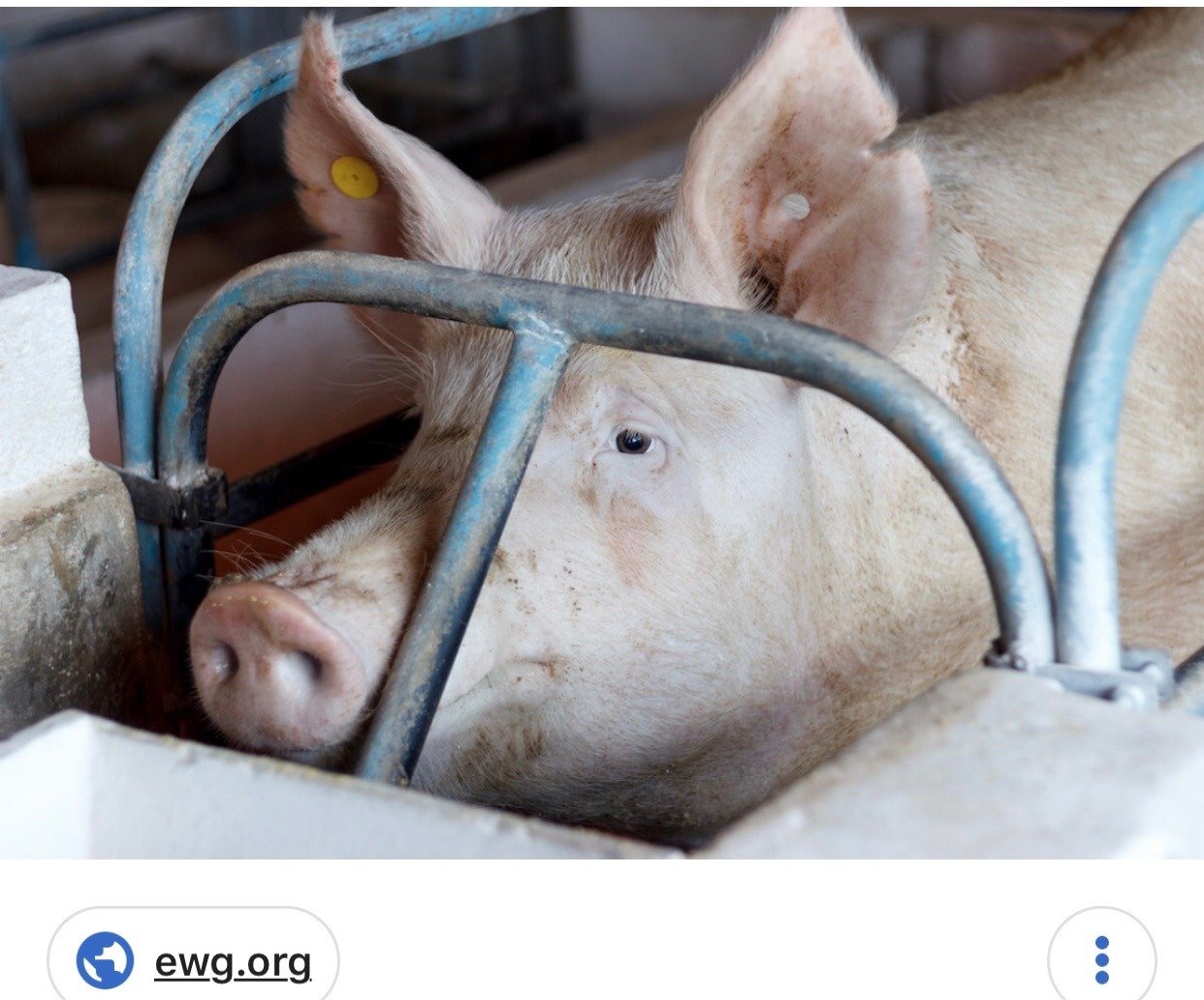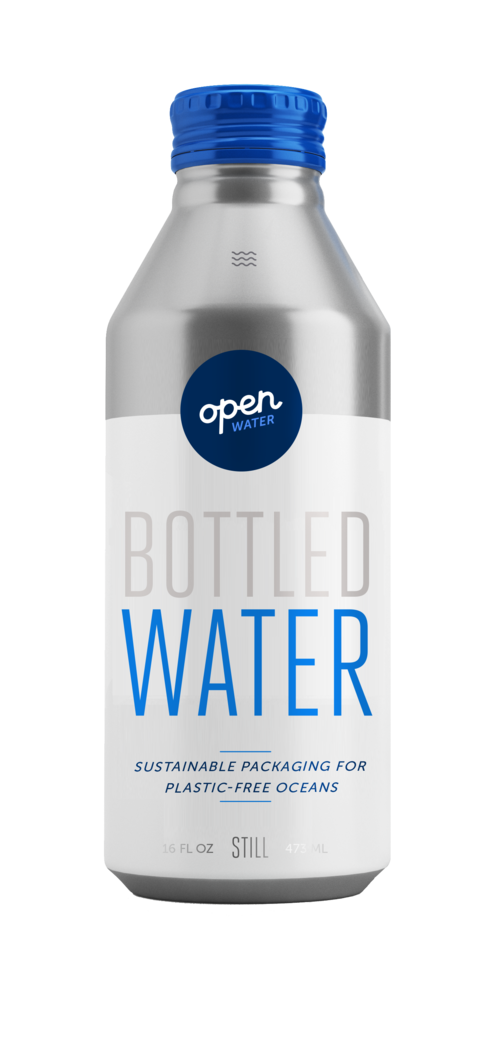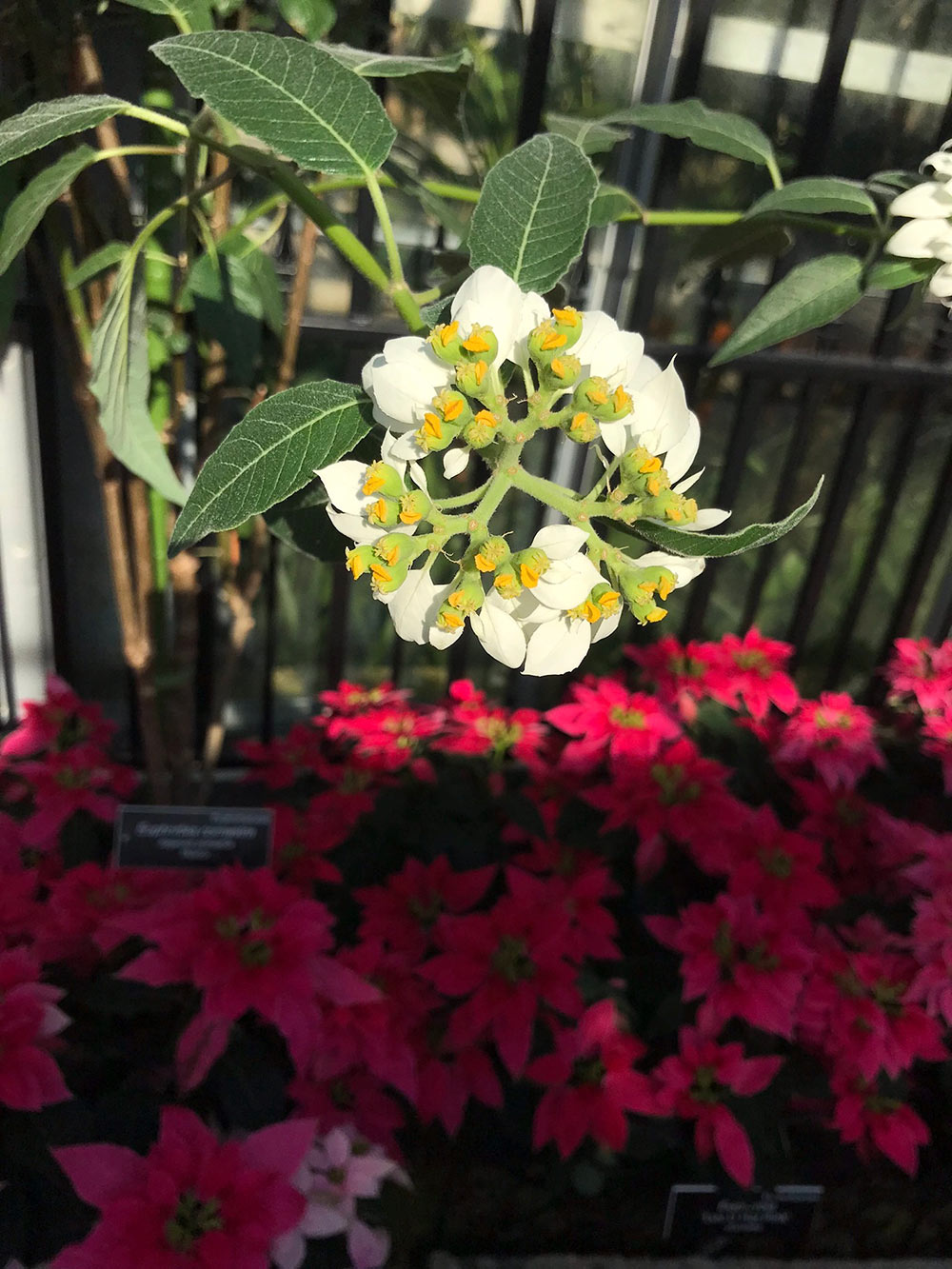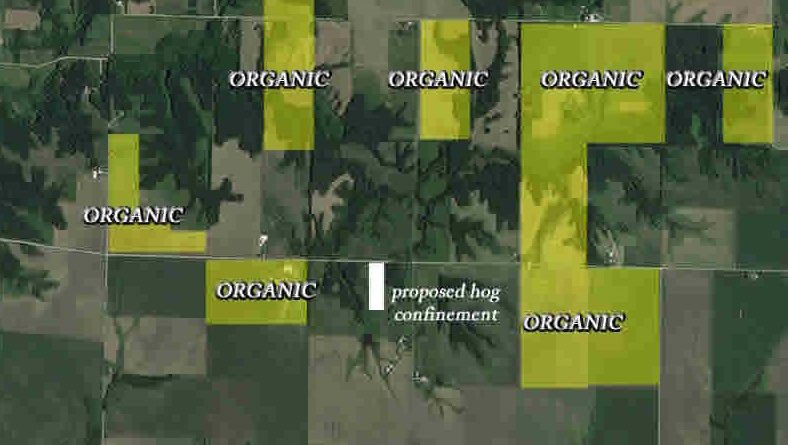The Tyranny of CAFOs
Podcast: Play in new window | Download (Duration: 1:45:06 — 50.1MB)
Subscribe: Apple Podcasts | Spotify | Android | iHeartRadio | Podchaser | Email | TuneIn | RSS | More
Fighting CAFOs in Illinois
(December 2, 2018) A battle is raging right now in Adams County in the western part of Illinois to keep an yet another farm from being ruined by neighboring CAFOs. If you live in Chicago or environs, you might not be familiar with Adams County. However, you might know that Quincy, the county seat, which sits on the Mississippi River, is roughly 140 miles north of St. Louis, also on the Mississippi.
Another thing that you should know is that there is 5,000-head concentrated animal feeding operation (CAFO) that would like to be established in the county. It’s part of a company called County Line Swine and, according to Illinois Citizens for Clean Air and Water (ICCAW) and the Socially Responsible Agricultural Project (SRAP), it “would be sited adjacent to a successful certified organic farm and near Adams County residents who have pre-existing health problems that would be impacted by the massive animal confinement.”
That organic farm is called Sunset Lake Organics, and it’s owned by Randy and Crystal Clair. According to their website, they have 540 acres of certified organic crops with 250 acres in transition. However, Crystal Clair is fighting breast cancer. Obviously, that would be a serious issue in the best of circumstances. But, as Midwest Organic & Sustainable Education Service (MOSES) reports, these are not the best of circumstances by a long shot.
 County Line Swine plans to house 5,000 hogs at a time, with two cycles per year (10,000 hogs/year). After two years, Peter would be able to double the size of the operation by adding a second building, and two years after that would be able to expand again with a third building. Each building would produce 1.2 million gallons of manure a year. The manure falls through slats in the floor where the pigs are housed, into storage pits lined with eight inches of concrete. The storage capacity for each building will be enough for nearly 12 months. The state’s Livestock Management Facilities Act requires only five months of storage.
County Line Swine plans to house 5,000 hogs at a time, with two cycles per year (10,000 hogs/year). After two years, Peter would be able to double the size of the operation by adding a second building, and two years after that would be able to expand again with a third building. Each building would produce 1.2 million gallons of manure a year. The manure falls through slats in the floor where the pigs are housed, into storage pits lined with eight inches of concrete. The storage capacity for each building will be enough for nearly 12 months. The state’s Livestock Management Facilities Act requires only five months of storage.
Peter has secured access to 620 acres near the proposed confinement hog operation on which to spread his manure. County Line Swine would keep records on manure production and nutrient value to calculate loading/application rates for spreading manure. In Illinois, manure management is regulated by the state Environmental Protection Agency. Peter plans to inject the manure eight inches below the soil surface, which significantly reduces the risk of runoff.
According to the Clairs, some of the fields where Peter would be spreading manure have drain tile that drains to their lake. They worry that manure will end up in their lake. And if the lake becomes contaminated, they say, their business will no longer be viable.
But that’s not the only issue. The CAFO next door could have a serious impact on Crystal Clair’s health.
At the public hearing, she stated, “I’m seriously ill. And I had been doing well until this was thrown at us. I’ve been advised by my medical staff that if I can hear vents or smell the smell [of the proposed hog operation] that I have to stay inside. I am a partner in this business… I run the combine. I do tillage. And you are trying to take that away from me. You don’t have the right. If you allow this hog confinement to be put here, then you are making me abandon what I love.”
Part of the problem is the nature of water. Meaning that it tends to flow where it wants to flow. Did I mention that the organic farm is called Sunset Lake? Which means that there’s an actual lake on the property. And since the residue of the CAFO next door is probably going to drain into that lake, the organic compost that is produced there is going to be compromised. If you’re an organic farm, that’s a real problem.
“If the lake is polluted, we cannot use the water for our compost anymore because it would just be considered manure. If our ground becomes contaminated, the crop would be denied organic status, ” said Randy Clair. “All of our crops are tested for GMOs and toxins before sale. Not all of our organics are food-grade, but a lot are.”
After a public hearing on September 20 about this issue, it looked as if the Illinois Department of Agriculture (IDOA) was ready to give the green light to the County Line Swine project. However, the ICCAW and SRAP issued a press release on November 29 stating that IDOA has, for the moment at least, put the brakes on the project, which is opposed by a group called Save Adams County (SAC).
Since a public meeting for the facility was held on Sept 20th, additional documentation by SAC has been presented to the Illinois Department of Ag proving that many of the LMFA criteria are not met, despite the Adams County Board’s recent unbinding approval of meeting the criteria.
SAC says that the newly discovered information and the applicant’s submitted inaccuracies proves the County Line Swine proposal does not fully meet all provisions of the LMFA. The group points specifically to Section (510 ILCS 77/12.1) (A) of the LMFA. It states, “If the Department finds that, more likely than not, the provisions of the Act have not been met the Department shall send notice to the applicant that construction is prohibited.“
The Illinois Livestock Management Facilities Act (LMFA) is itself controversial. Some folks say that the law has been successful.
[Illinois Farm Bureau’s Mark] Gebhards says since the LMFA was written in 1996, manure discharge complaints to the Illinois EPA regarding livestock farms have decreased consistently, down to an all-time low of 24 in 2017.
The LMFA was designed with all decision-making authority for siting new factory farms resting with the Illinois Department of Agriculture (IDOA), a state agency that promotes agribusiness. A search of state records shows that IDOA has never denied a construction permit for a factory farm in Illinois, despite opposition from many neighbors and communities over the course of almost two decades.
There are also issues about wells on the site, which I don’t have space or time to go into here. Let me just say that Peggy and I are welcoming Sunset Lakes Organics co-owner Crystal Clair to the program this morning, along with her son Thad King. They are joined by ICCAW and SRAP stalwart Karen Hudson, who has been on The Mike Nowak Show many times.
By the way, if you want to view a few short videos from the September 20 hearing, Thad King has posted them here.
Solving the plastic bottle conundrum
It’s hard to know anymore what to say about how the planet is drowning in plastics. You can list statistics:
 In 2016, world plastics production totaled around 335 million metric tons. Roughly half of annual plastic production is destined for a single-use product.
In 2016, world plastics production totaled around 335 million metric tons. Roughly half of annual plastic production is destined for a single-use product.- Humans buy about 1,000,000 [one million] plastic bottles per minute in total. Only about 23% of plastic bottles are recycled within the U.S.
- Americans purchase about 50 billion water bottles per year, averaging about 13 bottles per month for every person in the U.S.! That means by using a reusable water bottle, you could save an average of 156 plastic bottles annually.
If you want to know how much plastic is dumped into the oceans each year, and lie awake at night thinking of that, go here.
If you want to know that there’s a backlash about trying to cut down on the use of plastics worldwide (are you kidding me?), go here.
If you want to know how a total ban on plastics “could damage the environment” (and now I’m trying not to scream out loud), go here.
Don’t even get me started about how “generous” Starbucks is for giving me an eleven cent discount whenever I bring in my travel cup, which is…um…let me think…every freaking time! But that’s another story. So let’s move on.
A few years ago, a swag bag that I received for some “green” event (and don’t get me started on the concept of green events and swag bags) contained a can–yes, a can–of water…with a twist top. I remember it distinctly, because it was called Green Sheep Water. And, after schlepping around plastic water bottles that I had refilled with tap water forever, I started schlepping around this funny little aluminum container, refilling it over and over again with tap water. Why?
Because I knew that, unlike a plastic bottle, when its useful life was over, it was going to be recycled. Why?
Because I knew that, unlike a plastic bottle, it actually had some value. Why?
Because it was made of aluminum! (Please don’t make me say “why” again!)
And, after awhile, because it was made of aluminum, it got pretty beat up and I finally recycled it…knowing that it was really going to be recycled.
Are you starting to get the picture?
That’s why Nicole Doucet is on the program this morning. She is one of the founders of Green Sheep Water, which recently rebranded itself as Open Water. She says,
“There’s a growing awareness of our ocean’s plastic pollution problem, and we’re all on the lookout for ways to reduce our impact. This rebrand will better align us with our mission and will make it easier for consumers to quickly understand our dedication to plastic-free oceans, which is what drove us to start this company in the first place.”
We’re on board with that. It’s a pleasure to have her in studio.
The evolution and devolution of poinsettias
Recently, I read an article in the Washington Post headlined, Reinventing the poinsettia: A classic Christmas flower’s colorful new looks. Though written in 2017, it got me thinking again about this holiday favorite. Heck, I’ve been hosting this radio show in one form or another for more than twenty years and, when you get to the holiday season, poinsettias are one of the plants that can fill a segment or two on a radio show in December. Just sayin’.
Anyway, the WaPo story says that
To date, all poinsettias were derived from a single species found in western Mexico named Euphorbia pulcherrima. This grows into a tall, rangy shrub whose scarlet bracts appear in the winter.
The smaller and floriferous new varieties are hybrids between this species and another, a summer bloomer named the dogwood poinsettia (Euphorbia cornastra).
It also refers to the North Carolina State University poinsettia trials program. I mention this because if you want to be overwhelmed by the number and color of different poinsettias, you need only click on to the above link. I’m not sure why we need to have so many different kinds of poinsettias, but I don’t want to spoil the fun of the breeders.

On the other hand, the WaPo story also mentions a fellow named William McLaughlin from the United State Botanic Garden, who is now doing a kind of “backwards engineering,” to produce the kind of poinsettias that once grew wild in Mexico and were imported to the United States.
He joins us on the show today, along with Joe Heidgen from Shady Hill Gardens in Elburn, Illinois. Joe is an old friend of The Mike Nowak Show, though it’s been a few years since he’s been on the program. Shady Hill is known as the “geranium specialists,” though they also grow their own poinsettias. It’s great to have Joe back on the show, along with Bill McLaughlin.

